In May the Cote D’Azur’s Sentier du Littoral is coastal path paradise and a beachcomber’s delight. There are very few other filthy tourists and the rocky coves are piled high with driftwood. On the green side of the trail the cliffs are a cicada loud explosion of flowers, spiky scented scrub and herbs with the temperature kept comfortable, under 30°, by the sea air. The blue side this May was 17°, cool enough to be refreshing, warm enough to swim for hours.
Much of the path from Cavalaire to St Tropez winds through fascinating rock gardens where the air is thick with the scents of the maquis.
Next time, always next time, I will take an identification guide to the plants and start to make sense of it all. I managed a dunce’s dozen of the obvious including sage, lavender, rosemary, thyme and aloe vera.
There are patches of welcome shade where the roller coaster randonnée ducks, dips and dives under low branches of pines and scrub oak and there are level stretches where you can walk on beaches but most of the path twists up and down between coves and around headlands. This section is 40 km of the 200 km of coastal trail in the department of Var.
For much of the way the path squeezes between grand gardens of the villas that this coast is famous for and the cliff edge.
There are a few signposts that suggest times to the next headland or village but these timings are of little value as the delaying distractions are continuous.
The trail is sometimes up to 70 meters above the sea and this is too far from the action for effective treasure hunting. There are the inevitable slides down the cliff to scratch around the tide line.
This coast of the Mediterranean has only a very small tidal range and it is odd not to be always watching the tides to time access or retreat. The volcanic rocks are sharp and unfriendly and tortuous around the headland of Cap Taillat.
Progress is slow and is both out of and in the water, a way of travel now called “coasteering”, I am surprised it has not been named “wild-coasteering“! It is the traditional way of travel for beachcombers, the more inaccessible the beach the higher expectation of treasure.
In the British Isles the hidden coves that were once the domain of cliff-sliding beachcombers have in the last 20 years been opened up and plundered from the sea. I first spotted this ungentlemanly practice on the Isle of Man. I was loaded to the rucksack gunwales and had stashed, for the next climb, a couple of useful pieces of mahogany in the back of The Oven, a large cave under Peel headland. Later that day I watched a kayaker returning from a paddle and landing on Fenella beach. I went down to the tide to help him carry his loaded boat up the beach. I nearly dropped the end I was carrying when I saw “my” planks strapped on his kayak.
Competition from sea kayaks and sit-ons has increased alarmingly. Nothing is sacred for these fekin’ piratical paddlers, they will be fishing for my bass next!
But on the Sentier du Littoral, at least out of the high season, the driftwood appears untouched and the rocky gullies and beaches are rarely visited. The preferred mode of travel here is not kayak but super-yacht and these pirates choose to keep well away from the rocks.
I guess there is more driftwood treasure in a kilometre of this convoluted coastline than on all the beaches of oft-plundered Cornwall.
Plastic bags wash in along the coast disguised as jellyfish and there are a fair few discards of Mediterranean beach life such as plastic water bottles, and sun cream containers. On the stretch near San Tropez you could soon fill your pockets with champagne corks. They are fired from yachts or from the bling lounge bars that line the top of the sand on Pampelonne beach and sound so full of tropical promise, Kon Tiki, Moorea, Eden, Zanzibar.
Surprisingly there is much less plastic visible on this stretch of the Mediterranean than on most of the coasts of the British Isles and particularly on the coasts of the Irish Sea. In three days walking I found only very occasional pieces of rope from commercial fishing, no nets, oil barrels, wellies, gloves or discarded broken fish boxes.
On bank holidays and weekends in May the Pampelonne bars start cleaning their stretches of beach, fitting out and tuning up, pumping out their chill-out homing signal to the yachts anchored offshore. They tempt a few of the over-tanned to take to RIBs and tenders for the run to the beach landing stages, but it is still all low-key. There was only one Ferrari beside the bar owners’ fat cars, Porsche and BMW SUV tanks, parked in the shadiest corners of the bamboo roofed car parks. Only a few helicopters dropped in with more seriously blinged.
The menu boards visible to the unfashionable over-wall snoopers promised banquets of sea food washed down by a glass or 20 from one of the listed jeroboams. The choices were of course priceless but to give an idea I saw bass being sold for between €20 and an incredible €42 a kilo in “fishmongers” along the coast.
As the sun dropped out of view the most committed wrinkle seekers reluctantly flip-flopped home and a few anglers took up their favourite marks. They tackled up 13 foot surf rods with large fixed-spool reels and waited for the final swimmers to leave the sea. Incredibly it turns out that there are still a few bass in these over exploited waters. One local angler proudly showed me photos on his phone of bass of over 6 kilos from this beach, including a pair that would have sold for over €260 in even the cheapest local monger. It is illegal for anglers to sell their bass and illegal to have a dead bass in their possession that has not had its lower tail clipped to mark it as unsellable.
This particular angler was proud to show me his secret weapon but unwilling to let me photograph it when he lifted off the corner of its canvas cover. It was a metre long radio controlled boat with two small rear compartments covered by hinged flaps.
He baited his hooks with large live worms, and although my French is even worse than my German I think he said they are called Bibi or perhaps that this is the Italian name as he said they had been harvested in the lagoon shores near Venice. He bought them live for €3 each. I think they were Sipunculus Nudus, they were large and particularly ugly nude worms.
He placed both baited hooks from his two rods in the boat’s rear compartments and shut the lids. He steered the boat out over 300 metres offshore to the deep water near where the yachts had been moored in the day. He then remotely opened the hinged flaps and the weights dragged his bait down to what he hoped were the fishy depths.
This coast is best avoided in summer, late June till September. At that time it is hard to even get to the coast unless you arrive by helicopter or boat, the roads become one summer long hot traffic jam. But in May most of the coastal villas were unoccupied, at least those that are visible over hedges or from climbing up walls for a skeet. There were battalions of white van men servicing the villas and gardens, the roads around St Tropez busy with builders, roofers, gardeners, swimming pool cleaners, security system fitters, electricians, plumbers including one GB plated transit armed with twin ladders.
In this part of Europe “Heavy Plant” on the road means just that, flat beds delivering palms, cactus, pines, olive trees in jacuzzi size plant pots to provide instant woodland, forest or orchard.
The harbour at St Tropez had a few occupied yachts. On the rear deck of the biggest yacht a family from the Netherlands was being waiting on by two young Filipinos. They were receiving clear and loud instructions on how breakfast should be served. Most of the boats were being polished, varnished, washed and fitted out ready for the first rental of the season.
100 metres around the corner from the millionaires’ harbour the backside of St Tropez is wonderfully shabby.
Builders have been dumping material over the low cliffs into the sea here for countless years. It is a great stretch for mud-larking, without the mud. Old tiles, pottery, sea glass and an occasional green piece of brass or copper among the anemones in the clear warm shallow water.
The dusty rocky path is hot work but with a companion you can take turns to swim below the cliffs, cutting across bays enabling even a slow swimmer to keep pace with the shoe carrier who has to deal with all the ups and downs and ins and outs as well as keeping watch for treasure hidden in the heaps of driftwood.
If the weather has been warm and the winds favourable, then in May you could be lucky to find yourself swimming through squadrons of the small blue jellyfish, the by the wind sailors, Velella.
Each of these “jellyfish” is a hydroid colony, similar to the more stingy Portugeuse man-of-war. On the beach the mass strandings form stinky drifts. They soon dry crisp on top as their colour fades to pale pink but under the crust where still damp they keep some of their vibrant blue.
When dried out they resemble transparent plastic and are ringed like 2 to 5 cm long, oval record discs. They have a sail that rises from corner to 2cm in the middle and back down to the opposite corner.
I sorted through a couple of hundred and all had their sails running from NW- SE. I did not find any with a reverse set sail, the wind must have carried them on a different track.
To see them in their full living colour you need to swim through the swarms, they are delicate jewels and they really are sailing. They have a curtain of short tentacles around the blue rim and they float high on the surface film, their sails sets high and dry.

There are often bigger jellyfish sharing the water with the rafts of Velella and these, unlike the Velella are sub surface and very hard to spot when swimming.
Often enough your hand will palm away a Crystal jellyfish, a frisbee size clear disc with black necklace rim or a common Moon jellyfish.
“Ce qui embellit le désert ….., c’est qu’il cache un puits quelque part” (What makes the desert beautiful……, is that somewhere it hides a well) Antoine de Saint-Exupéry
What makes a dry drift of stinking Velella beautiful is that somewhere it hides Janthina, the remarkable fragile floating violet sea-snail.
These ocean travellers hang upside down in the surface film from the raft they create from air bubbles and they feed on Velella. They can be hard to find, but I am sure scientific journals will say “locally common” or “widespread” or some other demystifying phrase.
15 years ago, Michael Viney, nature writer on the Irish Times showed me the treasured specimens he had found and I was hooked. It was 2004 before I found my first sea-snail on the drying Velella high on the strandline at Carrownisky not far from his home at Thallabawn on the Mayo coast.
Since then I have inspected many rafts of Velella around the British coast but found only a few broken shell fragments. This time I was lucky to find some small ones recently stranded and still firmly attached under their by the wind sailor floating meals.
There were many tiny shells in the drying drift line, most smaller than periwinkles, all almost too fragile to pick up. As you handle them the thin edge of the shell often crumbles at the lightest touch, if you look at them too hard they will break. I chanced on some polystyrene packaging that looked like it once held test tubes and laid in layers of tissue I managed to preserve some examples in reasonable condition.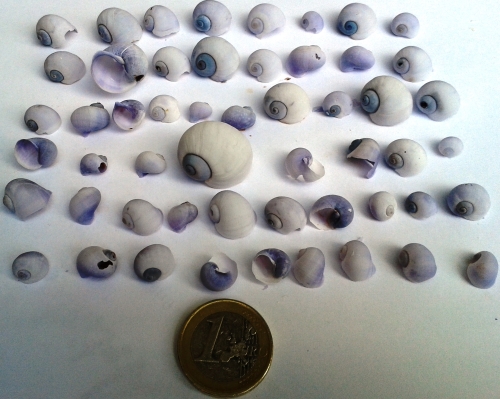
I found one or two shells contained their recently dead snails and I winkled them out of their houses with a thorn. The few drops of liquid that came out with the snails were the most intense dark purple ink. The shells ranged from white to violet with edgings of a darker violet and ultramarine blue.
“When I am an old woman I shall wear purple” Jenny Joseph
I can still recall the nightmare inducing pattern of my childhood bedroom wallpaper. If I should ever get my own snail shell of a house I will tear off the devil’s decoration that is wallpaper and burn it in a bonfire on the beach and let the incoming tide drown the evil ashes and the ebb carry them away. I will paint my bedroom the palest violet of Janthina, it will be soothing, not overpowering and the window frame will be the strong blue tint that forms the edge of her shell.
I will sleep well with the memory of the soundtrack of cicadas that carries easily across the water and a few hundred meters offshore has had any sharpness edited out by distance. I will again float on my back in the Mediterranean meniscus in the company of my fellow drifters, Janthina and her by the wind sailors and we will watch the cobalt sky come a metre closer each time we are lifted effortlessly on the slow salty swell.
Only the sea breeze will decide our destination.
“Plus léger qu’un bouchon j’ai dansé sur les flots” (Lighter than a cork, I danced on the waves) Le bateau ivre / The drunken boat – Rimbaud

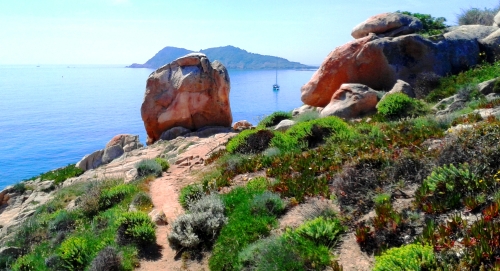
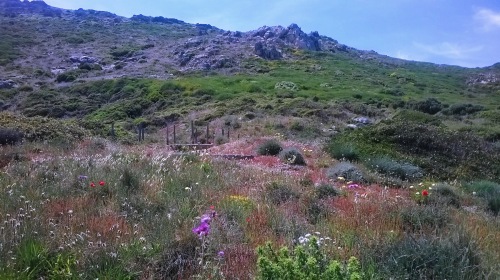
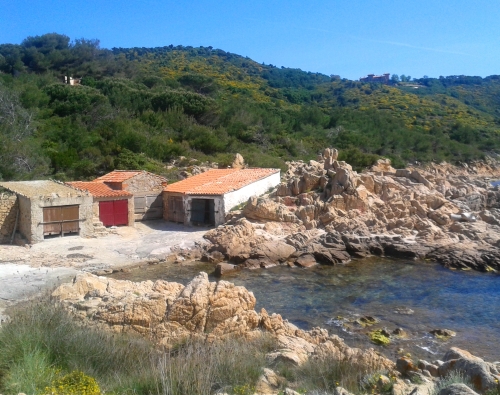
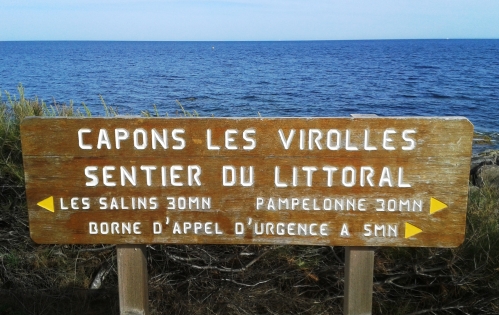


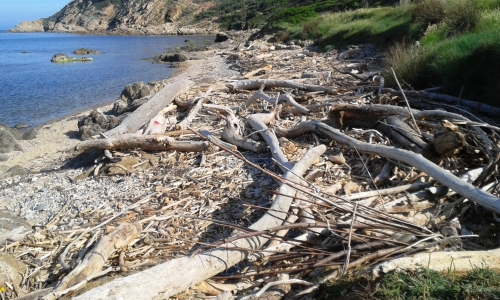
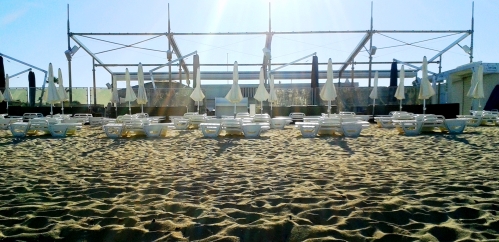
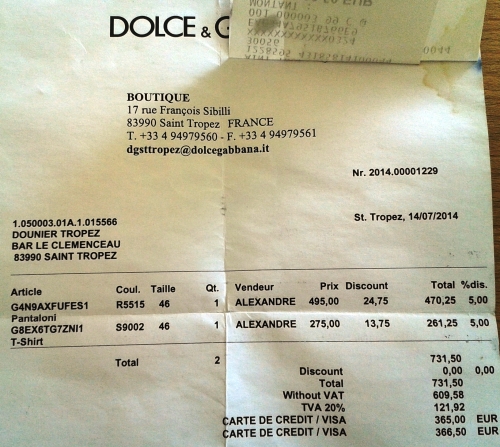
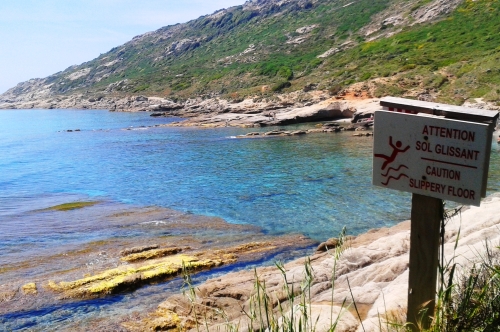
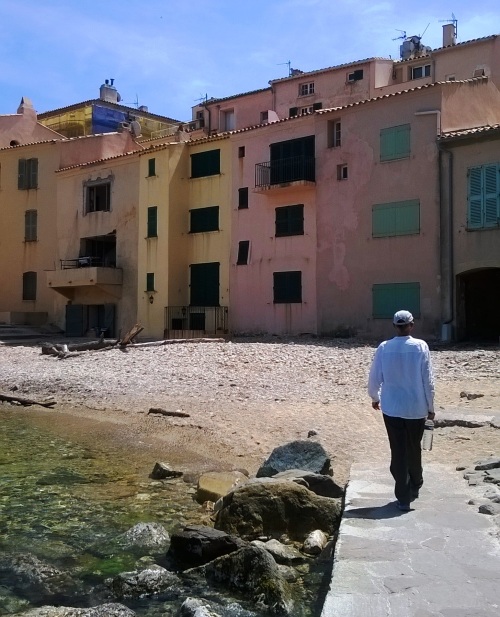
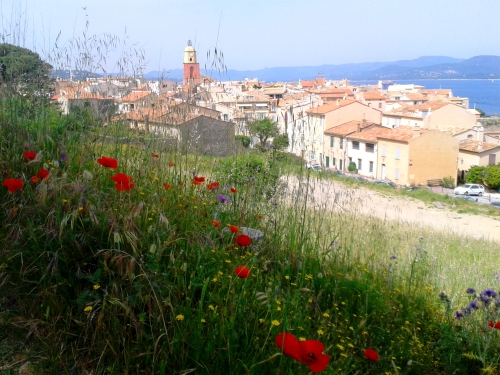


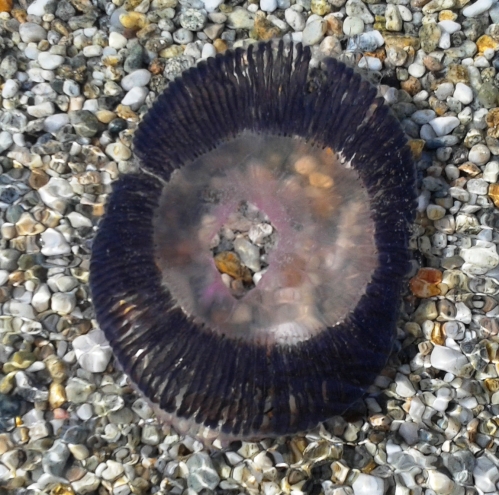
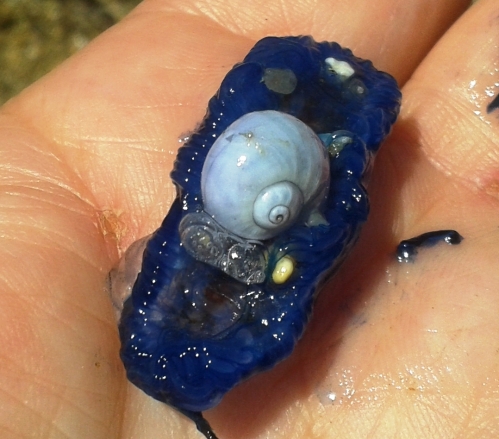
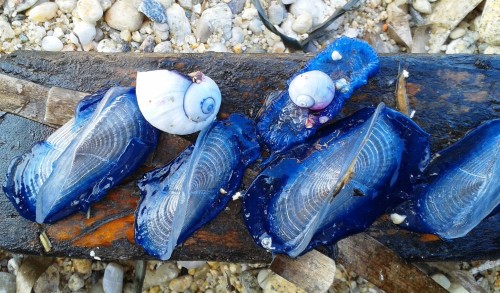
Nice post John-thanks.